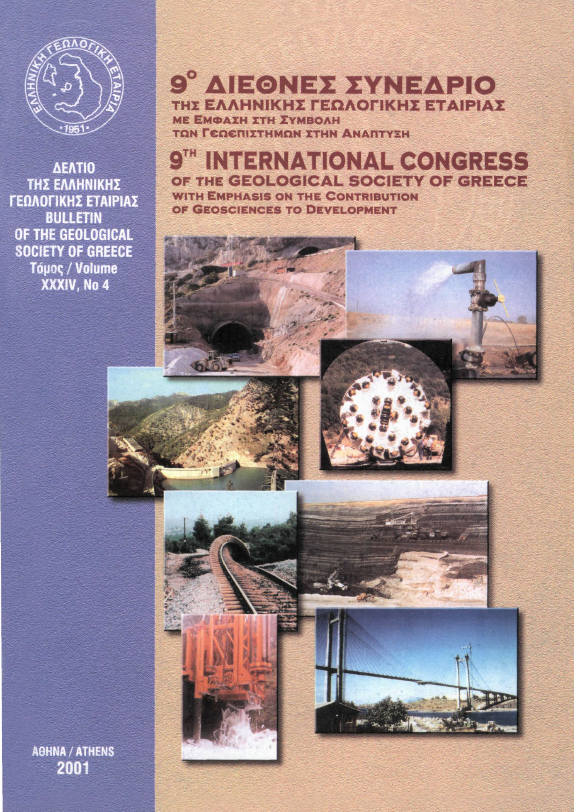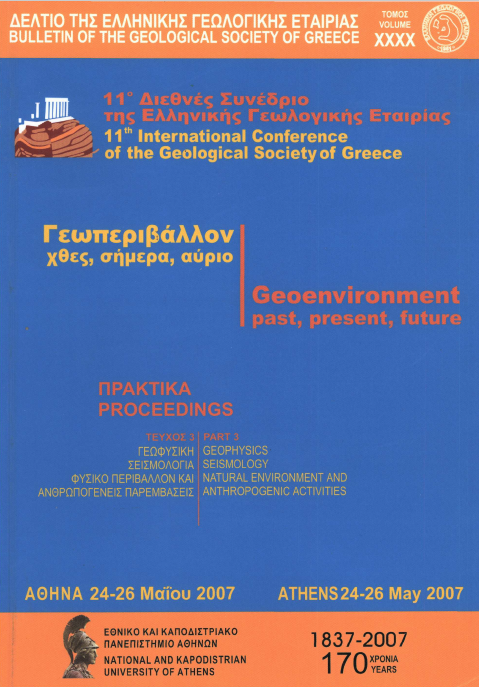An alternative Bayesian statistics for probabilistic earthquake prediction in Mexico, Central and South America
Περίληψη
Εκτιμώνται οι πιθανότητες γένεσης ισχυρών (Μ>6.5) σεισμών στις σεισμικά ενεργές περιοχές του Μεξικού, της κεντρικής και της νότιας Αμερικής. Η ευθεία προσέγγιση της στατιστικής Bayes εφαρμόζεται με σκοπό την εύρεση των ενδιάμεσων χρόνων ισχυρών σεισμών σε προκαθορισμένες σεισμικές ζώνες των προαναφερθεισών περιοχών. Η μέθοδος που εισάγεται επιτρέπει τον προσδιορισμό των εμπλεκομένων αβεβαιοτήτων, οι οποίες εκφράζονται ως ποσοστά της μέσης περιόδου επανάληψης των σεισμών. Ο προσδιορισμός με αυτό τον τρόπο είναι πολύ αποτελεσματικός επειδή οι αβεβαιότητες μπορούν να υπολογιστούν στην ίδια χρονική κλίμακα. Επίσης δείχνεται ότι οι τελικές μέγιστες πιθανότητες των ενδιαμέσων χρόνων, κατά Bayes, εξαρτώνται από τα δεδομένα και ειδικότερα από τη χρονική τους διάρκεια. Τελικά, γίνονται συγκρίσεις μεταξύ των προβλεπομένων και των πραγματικών χρόνων γένεσης, με σκοπό να εκτιμηθεί η συσχέτιση μεταξύ τους.
Λεπτομέρειες άρθρου
- Πώς να δημιουργήσετε Αναφορές
-
GALANIS, O. C., TSAPANOS, T. M., PAPADOPOULOS, G. A., & KIRATZI, A. A. (2001). An alternative Bayesian statistics for probabilistic earthquake prediction in Mexico, Central and South America. Δελτίο της Ελληνικής Γεωλογικής Εταιρείας, 34(4), 1485–1491. https://doi.org/10.12681/bgsg.17247
- Ενότητα
- Σεισμολογία

Αυτή η εργασία είναι αδειοδοτημένη υπό το CC Αναφορά Δημιουργού – Μη Εμπορική Χρήση 4.0.
Οι συγγραφείς θα πρέπει να είναι σύμφωνοι με τα παρακάτω: Οι συγγραφείς των άρθρων που δημοσιεύονται στο περιοδικό διατηρούν τα δικαιώματα πνευματικής ιδιοκτησίας επί των άρθρων τους, δίνοντας στο περιοδικό το δικαίωμα της πρώτης δημοσίευσης. Άρθρα που δημοσιεύονται στο περιοδικό διατίθενται με άδεια Creative Commons 4.0 Non Commercial και σύμφωνα με την οποία μπορούν να χρησιμοποιούνται ελεύθερα, με αναφορά στο/στη συγγραφέα και στην πρώτη δημοσίευση για μη κερδοσκοπικούς σκοπούς. Οι συγγραφείς μπορούν να: Μοιραστούν — αντιγράψουν και αναδιανέμουν το υλικό με κάθε μέσο και τρόπο, Προσαρμόσουν — αναμείξουν, τροποποιήσουν και δημιουργήσουν πάνω στο υλικό.





